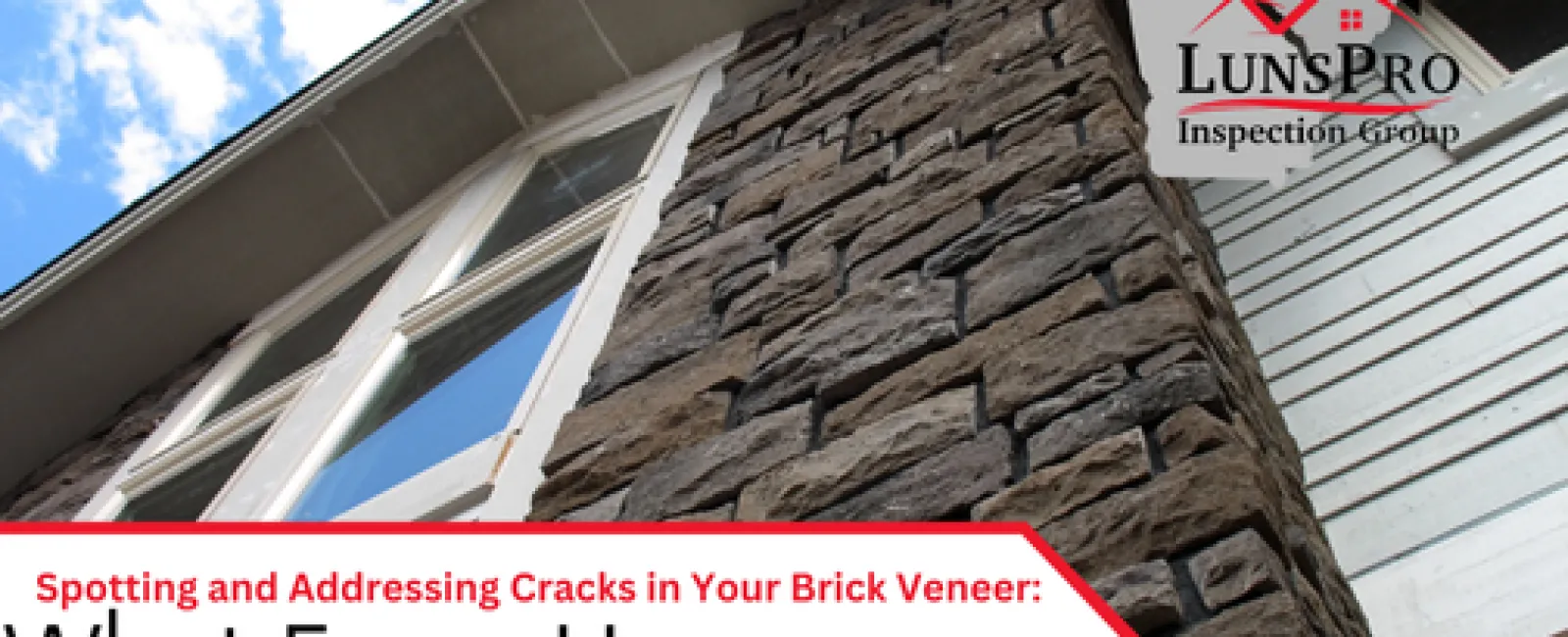Brick veneer is a common feature in many homes, providing both aesthetic appeal and structural integrity. However, cracks in this veneer, particularly around openings such as garage doors and windows, can signal underlying issues that require attention. Recently, an inspection conducted revealed a significant crack running up the wall above the garage door, highlighting the importance of regular checks in these areas.
Common Causes of Cracks in Brick Veneer
Cracks in brick veneer often occur above openings like doors and windows, where steel lintels are used to support the bricks. Several factors can contribute to the formation of these cracks:
- Inadequate Support: When the lintel is not adequately supported, it can cause the bricks above to settle unevenly, leading to cracking.
- Thermal Expansion: Changes in temperature can cause the materials to expand and contract, putting stress on the lintel and surrounding brickwork.
- Foundation Shifts: Movements in the foundation can transfer stress to the brick veneer, resulting in cracks around openings.
The Importance of Regular Inspections
Cracks in brick veneer may appear minor at first glance, but they can indicate more significant structural issues. Over time, these cracks can lead to water intrusion, further damage, and even compromise the safety of the home.
Regular inspections are crucial, especially around garage doors, windows, and other openings. Identifying and addressing these issues early can prevent costly repairs and ensure the structural integrity of the home.
Steps to Take When a Crack is Found
If a crack is discovered in the brick veneer, the following steps are recommended:
- Document the Crack: Photograph and measure the crack to monitor any changes over time.
- Schedule a Professional Inspection: A qualified home inspector should assess the crack to determine its cause and severity.
- Consult with a Structural Engineer: For significant cracks, consulting a structural engineer may be necessary to evaluate the need for repairs.
- Implement Repairs: Depending on the cause, repairs may include reinforcing the lintel, addressing foundation issues, or other corrective actions.
Cracks in brick veneer, particularly around structural openings, should not be ignored. Regular inspections and timely repairs can prevent these cracks from leading to more serious problems. Homeowners are encouraged to pay close attention to these areas and seek professional advice if any cracks are detected.
LunsPro Inspection Group is dedicated to providing thorough and professional assessments to help homeowners maintain the safety and integrity of their homes. Regular inspections are a key part of this process, helping to catch small issues before they escalate. Scheduling a professional inspection can provide peace of mind and protect one of the most significant investments—a home.

